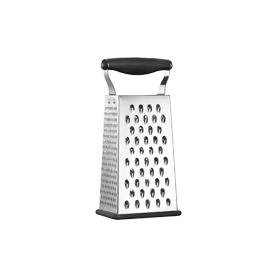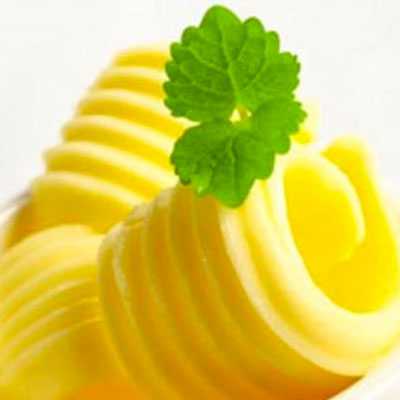Origin of Cheese Straws
Cheese straws are a popular snack in various parts of the world, and their exact origin is a bit of a mystery. However, they are particularly prevalent in the Southern United States, the UK, and the Caribbean. The best cheese straws recipe often depends on personal preference, but they all share a common theme: crispy, cheesy, and utterly delicious. While they can be made in various ways, the Southern version typically involves a buttery, cheesy dough, seasoned to perfection, and baked until golden and crispy.
Perfecting Your Cheese Straws
Creating the easy cheese straws recipe at home doesn't require professional baking skills, but it does call for attention to detail. The key to perfect cheese straws lies in the dough’s consistency and the baking process. Once you've mastered the basic recipe, you can start to play around with different types of cheese and add-ins to customize the flavor. Don't be afraid to add a pinch of spices or a handful of herbs to make the recipe your own.
Guyanese Cheese Straws: A Caribbean Twist
In the Caribbean, and Guyana in particular, cheese straws are a beloved snack, often enjoyed during holidays and celebrations. Guyanese cheese straws are known for their unique blend of spices and the inclusion of local cheeses, providing a delicious twist on the classic recipe. They're often a bit spicier and have a distinct flavor that sets them apart from other versions. Regardless of where they’re made or the specific recipe used, cheese straws remain a simple, delightful treat that's perfect for sharing.
Whether you're a fan of the Southern-style, the British version, or the spicy Guyanese twist, there's a cheese straw recipe out there for you. Enjoy experimenting in the kitchen and finding your perfect cheesy bite!
Why Are My Cheese Straws Not Crispy?
If your cheese straws aren’t turning out as crispy as you’d like, there could be several factors. Here are some possible reasons and solutions to help you achieve that desired crunch:
1. Oven Temperature:
- Incorrect Setting: If the oven temperature is too low, the cheese straws won’t get crispy. Ensure you preheat the oven to the right temperature.
- Calibration Issues: Sometimes ovens can be improperly calibrated, meaning the temperature inside is different from what is displayed. Consider using an oven thermometer to check.
2. Baking Time:
- Undercooked: Cheese straws need enough time in the oven to crisp up. If they’re taken out too early, they can be doughy or soft.
- Solution: Ensure they are baked until they’re golden brown, and let them cool completely, as they will continue to firm up.
3. Thickness of Dough:
- Too Thick: If the dough is rolled out too thickly, it can result in softer straws.
- Solution: Roll out the dough to an even, thinner layer.
4. Ingredient Ratios:
- Butter and Cheese: The ratio of butter and cheese in the dough can affect crispiness.
- Solution: Follow the recipe closely, and make sure your measurements are accurate.
5. Humidity:
- Moisture in the Air: High humidity can make it difficult for the cheese straws to crisp up.
- Solution: Bake on a dry day or in an air-conditioned kitchen if possible.
6. Cooling Process:
- Not Cooled Properly: Cheese straws need to cool completely on a wire rack to help them crisp up.
- Solution: Allow ample time for cooling before serving or storing.
7. Storage Issues:
- Stored While Warm: Storing them while they are still warm can trap steam and make them soggy.
- Solution: Wait until they are completely cool before storing in an airtight container.
How To Serve Cheese Straws?
Serving cheese straws is a delightful experience. They can be enjoyed with a variety of accompaniments. Cheese straws are best enjoyed at room temperature as it ensures they retain their crispiness.
For an elegant and convenient presentation, you can arrange cheese straws in a jar or tall glass, stand them up for a stylish touch that also makes them easily accessible. If you prefer a more casual and inviting look, lay them flat or create a delightful heap on a platter.
Here’s how you can serve them:
On a Charcuterie Board:
- Pair with Meats: Cheese straws complement the savory flavors of cured meats. Lay them out next to slices of salami, prosciutto, or chorizo.
- With Cheeses: Although cheese straws have cheese in them, they can be paired with soft cheeses for a textural contrast.
As a Snack:
- Snacking: Cheese straws are great on their own as a crispy, savory snack.
- Dipping Options: Serve with a side of marinara sauce, ranch dressing, or any other dip of your choice for an extra flavor kick.
With Drinks:
- Cocktail Companion: Their crispy and savory nature makes cheese straws an excellent accompaniment to cocktails, especially those on the lighter, citrusy side.
- Wine Pairing: Choose awhite wine or a light red wine to complement the flavors without overwhelming them.
With Soups and Salads:
- Crunchy Croutons: Break them into smaller pieces and use them as a crunchy topping for soups or salads.
At Parties:
- Appetizer Appeal: Lay them out on a platter for guests to enjoy as they mingle.
- Kids’ Favorite: Children usually love these cheesy, crispy treats, making them a hit at family gatherings.
How To Store Cheese Straws?
Storing Cheese Straws for Lasting Freshness
Proper storage is crucial to maintain the crunch and flavor of homemade cheese straws. Here’s a comprehensive guide on how to store them effectively:
Room Temperature:
- Place the cheese straws in an airtight container. Ensure that they have cooled to room temperature before storing to prevent condensation that can make them soggy.
- Line the container with a paper towel to absorb any excess oil and moisture, helping to maintain their crispness.
- Store the container in a cool, dry place away from direct sunlight. A pantry or cupboard is ideal.
- Properly stored, cheese straws can last for up to 2 weeks at room temperature.
Refrigerate:
- While cheese straws are best enjoyed fresh, you can refrigerate them to extend their shelf life.
- Place them in a sealed airtight container or a resealable plastic bag.
- When you’re ready to enjoy them, reheat in an oven or toaster oven at 350 °F (175 °C) for 5-10 minutes, or until they’re crispy again.
- Refrigerated cheese straws can last up to 1 month.
Freeze:
- For long-term storage, you can freeze cheese straws.
- Place them in a single layer on a baking sheet to freeze initially, ensuring they don’t stick together.
- Once frozen, transfer the cheese straws to an airtight container or a resealable freezer bag.
- To enjoy, reheat from frozen in an oven or toaster oven at 350 °F (175 °C) for 10-15 minutes, or until crispy and heated through.
- When stored in the freezer, cheese straws can last for up to 3 months.
Avoiding Humidity:
- Cheese straws are best enjoyed when they are crispy, so it’s important to keep them away from humidity.
- Avoid storing them in the refrigerator for too long, as it can introduce moisture and make them soggy.









































